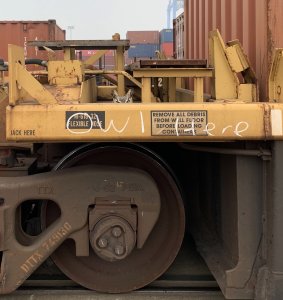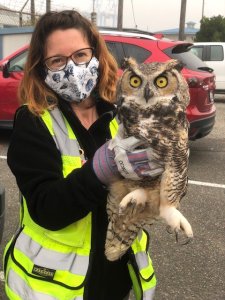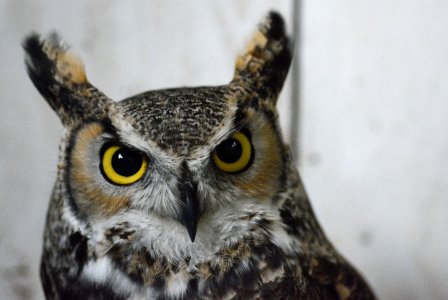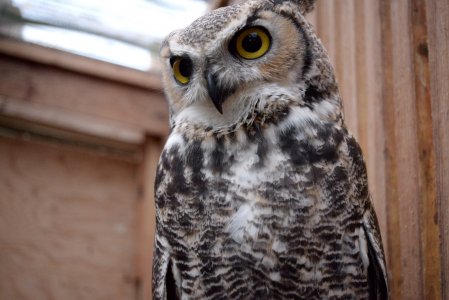A few weeks ago, a great horned owl tried hoppin’ freight for its fall migration. He and I had to have a frank conversation about that’s not how bird migration works. Plus, he was wide-eyed to learn this particular train went east-west, not north-south. The owl would have been pretty disappointed to spend his winter in Chicago. Nonetheless, he was not amused that I derailed his plans.

The good folks at TTX, a railcar provider for the Port’s North Intermodal (NIM) rail yard, noticed the stowaway early on a Monday morning (it might have even been the hoot shift) and called the Port Operations team, who in turn called me. TTX marked the rail car the owl had perched himself on to avoid disturbing it while building the train.

The owl is in good hands with our Port Biologist.
There were no obvious injuries, so we suspected it ate something it shouldn’t have. We can’t confirm if they were Tootsie Pops. But it was obvious he had run out of steam because he did not argue or protest when I retrieved him.
After capturing the feathered vagabond, he was delivered to the wonderful caregivers at West Sound Wildlife Center on Bainbridge Island where they gave him a comprehensive examination.
Unfortunately, he did sustain injuries that will prevent him from being able to return to the wild; however, West Sound Wildlife Center is optimistic the owl will be a good candidate to become an educational ambassador. They have started the official permitting process, which is required to obtain wildlife for educational purposes, and they are building him his very own owl-friendly enclosure—his very own "hoot suite".

Photo by Jay Wiggs, West Sound Wildlife Shelter
He will be able to help West Sound Wildlife Center educate the public about the importance of wildlife in our urban areas. Port staff have named him “Nim” to commemorate his adventure in the NIM Yard.
It’s a little soon to hoot and holler, but he is on the right track to recovery.
Environmental Connection
If you find sick or injured wildlife, please contact your local animal control or refer to Washington State Department of Fish and Wildlife (WDFW) website.
Most wildlife rehabilitation centers are funded by donations and rely on volunteers to help facilitate care for sick and injured critters. If are interested in donating and/or getting involved, you can find a local licensed wildlife rehabilitator on the WDFW website.
If you want to donate directly to Nim’s rehabilitation, visit West Sound Wildlife Center and donate on behalf of patient #20-1503.

Photo by Jay Wiggs, West Sound Wildlife Shelter
